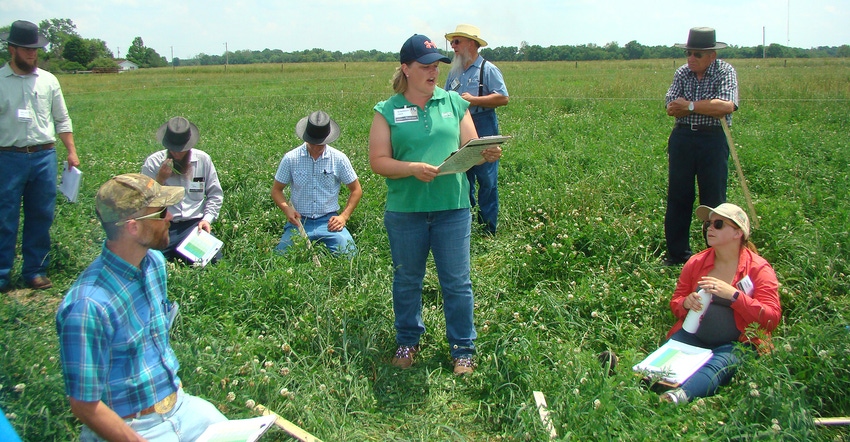Pay attention to key factors when setting up grazing systems.
July 23, 2021

If you’ve heard about management-intensive grazing systems in which the animals are moved from one small paddock to another multiple times each day, you likely have one of two reactions: That would be a great way to get the absolute most out of my pasture, or that sounds like a lot of work that I don’t have time for. Whichever camp you fall into, grazing specialist Susannah Hinds says there’s hope for you.
“Your management level is important to consider as you try to improve your pasture and your bottom line with rotational grazing,” says Hinds, with the Natural Resources Conservation Service. “Each of us have different time resources — time commitments, off-farm jobs, available energy and other responsibilities. You have to take these factors into account as you lay out your paddocks.”
Related: Don’t let pastures run out of gas
You can still reap many of the benefits of rotational grazing with a lower level of management and only moving your livestock every three to four days. The main thing is to create a system of smaller sections, or paddocks, in your overall pasture where animals don’t have the freedom to overgraze parts of the pasture while underutilizing other parts.
Related: 5 practices that pay off in pasture management
“The science says that you should move the animals into the pasture when it is about 8 to 10 inches tall, and take them off when it’s about 4 inches,” Hinds says. “For a beef cow herd, the optimum number of paddocks is about eight, with three or four days per paddock. Doing that allows the plants to rest and ‘recharge their warehouse,’ to get ready for the next grazing rotation.”
Laying out paddocks
Hinds says that besides your management level, other factors to consider when creating a system of paddocks include types of forage, soil types, shade, congregational areas and existing fences.
While some shapes of paddocks are better than others, everyone’s situation is different, and there is no “perfect” way to design your paddocks. Calculate the size of paddock you’ll need to meet the nutritional needs of your species and be able to graze the appropriate amount in three or four days, before rotating to the next paddock.
The ability to have a good supply of clean water — preferably within 800 feet — is also a key. Although having a network of underground water lines can be a great system, it’s not for everybody. A system of hoses can do an adequate job.
“Make sure your exterior perimeter fence is really good,” Hinds says. “That’s your last line of defense in keeping your animals on your property. That’s especially important in northern Indiana, where there is lots of open country, with corn and soybean fields. It will also help you sleep a lot better at night.”
Good examples include a woven-wire fence with a strand of barbed wire across the top, a barbed wire fence with four or five strands, or a high-tensile fence with lots of wires. Then if you add electricity, it also becomes a psychological barrier.
“In order to be a good psychological barrier, the animals need to ‘get bit’ pretty good the first time they touch it,” she says. “That learned behavior must start with the first time; otherwise they won’t respect it.”
Then you can design paddocks using interior fences consisting of a single strand of high-tensile wire, poly wire or poly tape, which will become your management zones, she says. You can manage animals for the amount of forage you want consumed over the amount of time you want it consumed.
Boone writes from Wabash, Ind.
About the Author(s)
You May Also Like



.png?width=300&auto=webp&quality=80&disable=upscale)
.png?width=300&auto=webp&quality=80&disable=upscale)
